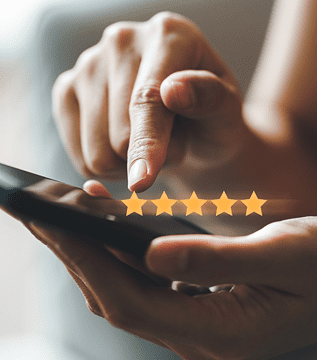
Article
How Design Can Improve Ratings for Medical Device Apps
This post was previously on the Pathfinder Software site. Pathfinder Software changed its name to Orthogonal in 2016. Read more.
I attended the 2012 mHealth Summit in Washington DC earlier this week and came away impressed with the how fast things are moving in this space.
The conference itself, now in it’s fourth year, has grown to over 3800 attendees and over 300 exhibitors. Major players like Kaiser Permanente, Intermountain Healthcare, Aetna, United Healthcare, Mayo Clinic, Qualcomm and Johnson and Johnson were well represented, as were startups, service providers, physicians and government agencies. These organizations are beginning to recognize the transformative power of mobile on the healthcare sector and are putting serious money and manpower into their mobile efforts.
A couple of trends stood out to me from this year’s conference:
Changes to Reimbursement are Here Already
Just before the conference, a study came out claiming that 31 million patients were already enrolled in Accountable Care Organizations (ACOs) in which reimbursement is tied to population health. While there is some debate about the findings, they certainly brought home that changes to reimbursement models are not purely theoretical or something for the distant future.
There was a lot of discussion on readmissions, the patient centered medical home, and meaningful use. Whether patients are in an ACO or not, changes to reimbursement are already here and impacting hospitals, clinicians, and patients, and those changes will only accelerate.
Reimbursement Changes Spurring Innovation
These reimbursement changes are spurring outcome and cost focused innovation both inside and outside the hospital. While much can be done to improve effectiveness within hospitals (see Atul Gawande’s recent analogy between healthcare and the cheesecake factory) there is likely, even more, opportunity outside the hospital, through patient behavior change and earlier, more frequent feedback between physicians, patients, and machines. More on the machines part later.
The Promise of Mobile
This is one area where Mobile really shows a lot of promise:
Experiments in Patient Engagement.
Mobile provides great tools for patient engagement, but most organizations are in the early stages of grappling with how to use them, and there’s a lot of confusion and conflicting information out there. For example, one panelist claimed that it was impossible to get more than 11% of patients over 65 to use mobile apps to engage, only to be immediately contradicted by an audience member from Montana who suggested that in his experience providing financial incentives like copay reimbursements worked wonders with seniors.
The good news is there are lots of data driven experiments and learnings being shared, including work in persuasive design and the dynamics of social networks, so I expect lots of progress in this area.
Platforms and Big Data
Of course, you need better integration to get all of this data together, analyze it and provide meaningful information where it’s needed.
Integrated groups like Kaiser Permanente and Intermountain have a head start on all of this – they’ve been dealing with patient engagement and reimbursement for population health, have data on this, and are actively using that data to improve outcomes for their populations.
But there’s lots of room to improve on the current state of integration. That’s where platforms like Qualcomm Life’s 2net and Aetna’s CarePass come in.
The 2net Platform is a cloud-based system designed to be universally-interoperable with different medical devices and applications, enabling end-to-end wireless connectivity while allowing medical device users and their physicians or caregivers to easily access biometric data, with two-way connection capabilities and a broad spectrum of connection options.
Aetna’s CarePass takes this one step further. The platform enables consumers to share information across apps and create a personalized, coherent experience to manage their whole health, from getting care to staying well, all with one sign-on. Aetna has integrated a number of their own apps, like iTriage, Medicity and ActiveHealth Management.
For Aetna, this fits into their vision to build out the infrastructure platform for ACOs and get as many providers and consumers onto the platform as possible.
Which brings us back to reimbursement and regulatory changes. The MHealth Summit provided a great look at the state of MHealth in 2012, a glimpse of where we are going, and of the challenges we still face. I can’t wait to see where we go in 2013.
Related Posts

Article
How Design Can Improve Ratings for Medical Device Apps

Article
Bluetooth Trends in Smartphones: Effects on Medical Devices

Article
Developing Cross-Platform Medical Device Apps with Flutter

Article
CBI Mobile Medical Apps Summit 2015